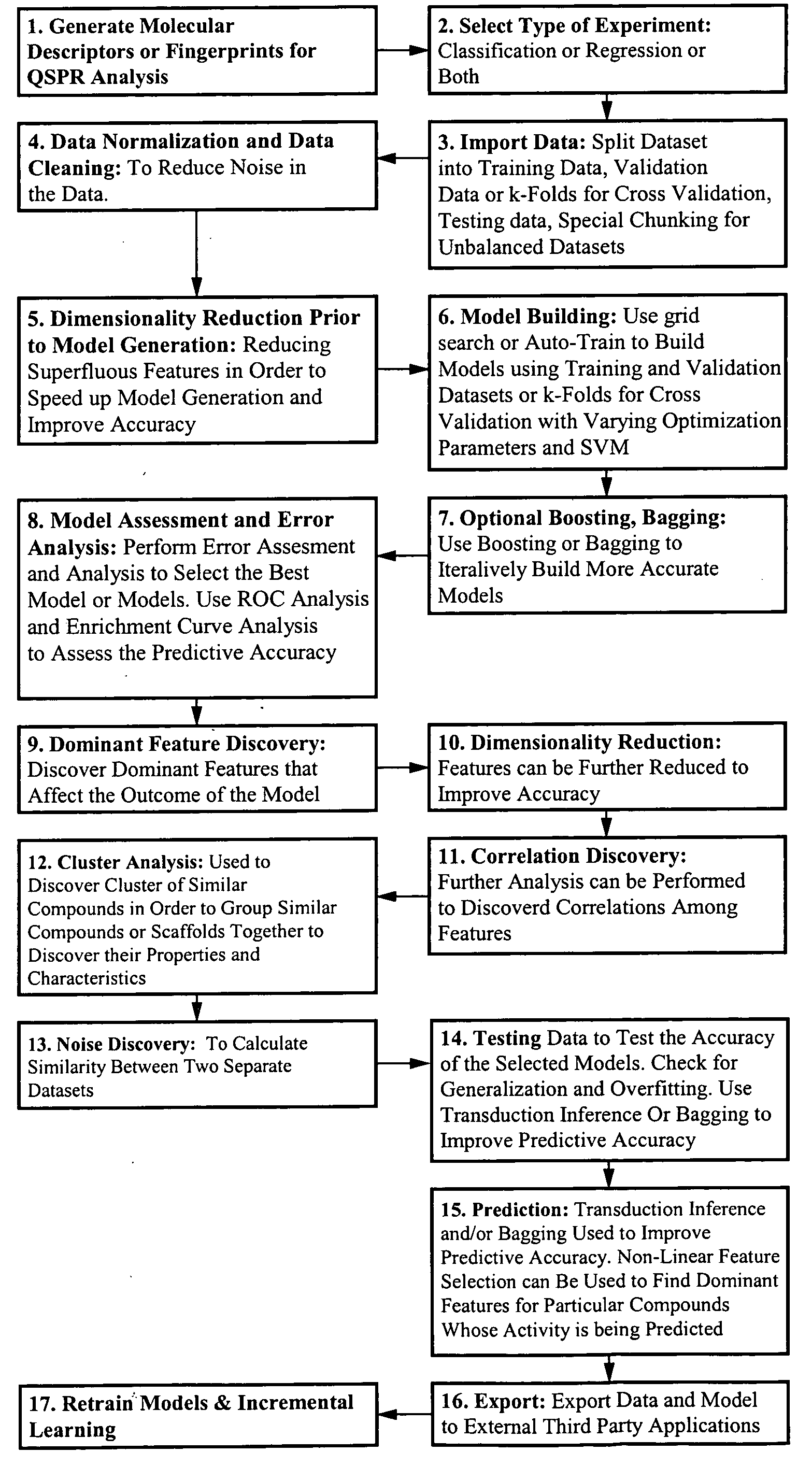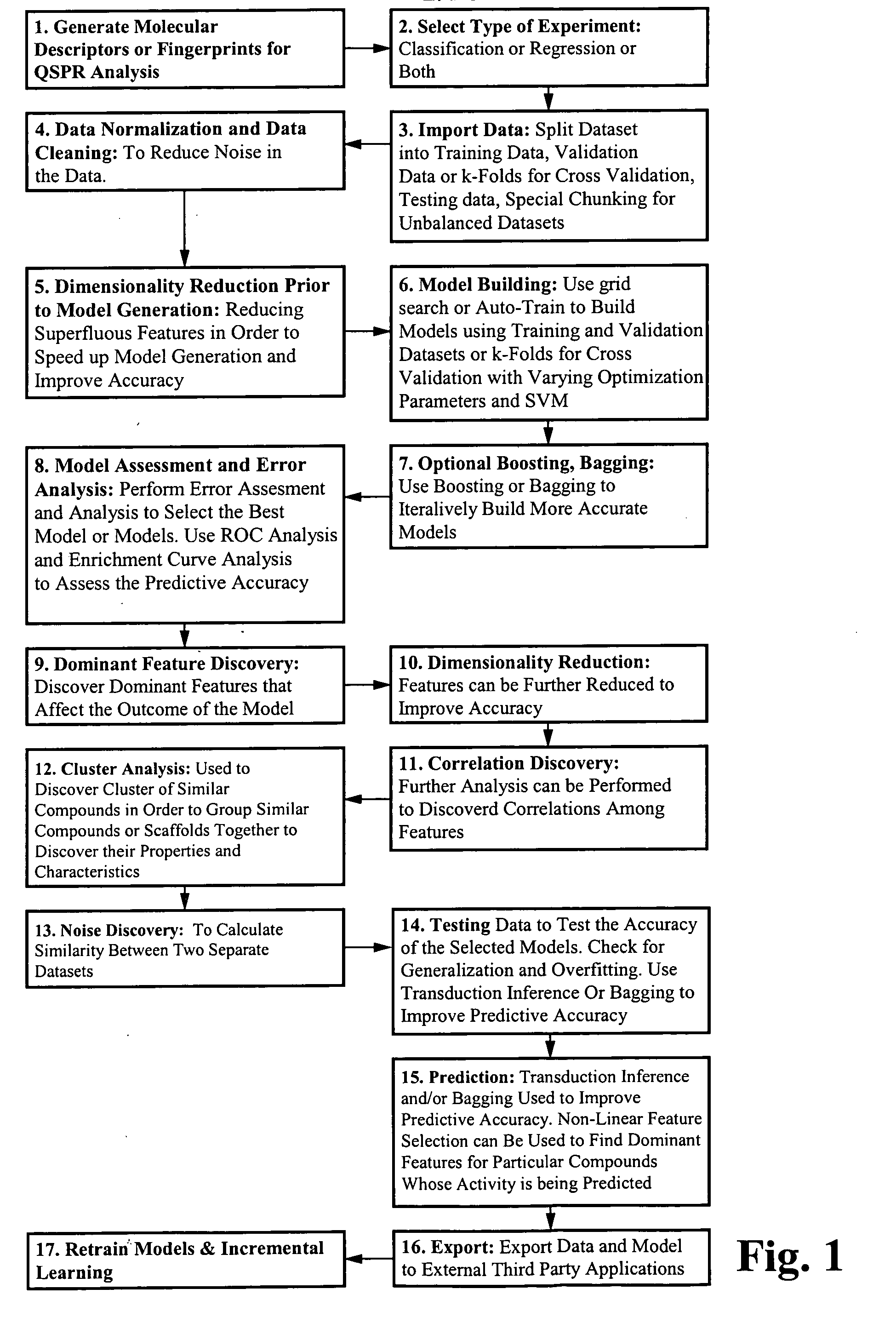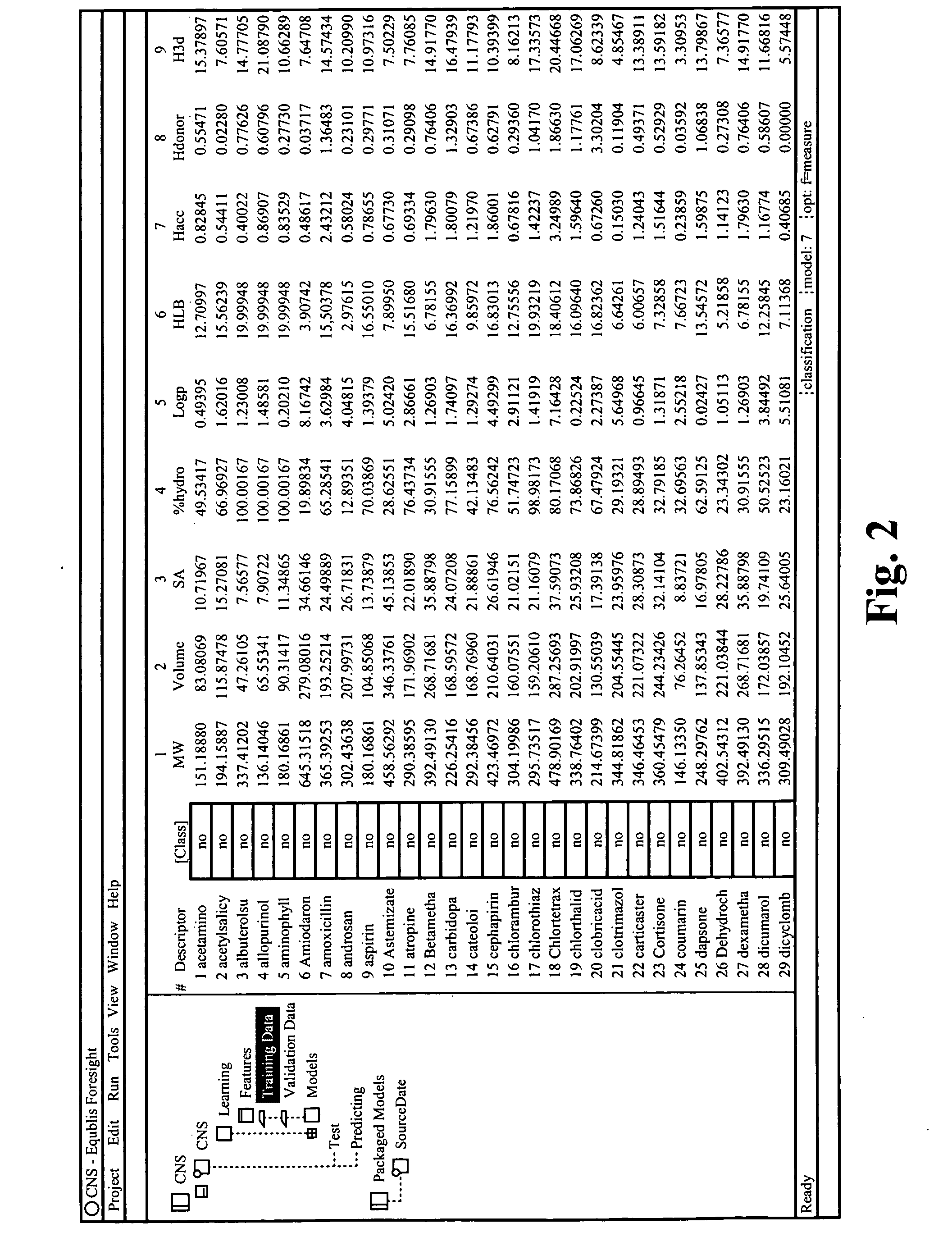Method and apparatus for predictive modeling & analysis for knowledge discovery
a predictive modeling and knowledge discovery technology, applied in the field of can solve the problems of a large number of problems, the difficulty of performing predictive modeling and analysis, and the germanity of empirical data modeling
- Summary
- Abstract
- Description
- Claims
- Application Information
AI Technical Summary
Problems solved by technology
Method used
Image
Examples
example
[0162]You generated a model and you want to test the model. You have some ground truth data and you run them:
100 compounds
5 of them positives
[0163]You run the system and it ranks and list them from highest probability of the compound being a positive to lowest. You examine the list and find that 2 true positives are in the first 10 compounds listed and 5 true positives are in the first 20 listed.
[0164]That means you have 40% true positives in 10% of the database. Your second point is 100% true positives in 20% of the database.
[0165]Foresight Desktop should plot a point on an Enrichment Curve for every threshold for the selected model. True positives is along the y-axis. % of the database is along the x-axis.
7.10 Result Ranking
[0166]Ability to sort the data points from most likely to be in a particular class (active) to least likely based on the y-value that specifies the distance from the hyperplane.
8. Dominant Feature Selection & Ranking
[0167]FIG. 9 illustrates Dominant Feature Ran...
PUM
 Login to View More
Login to View More Abstract
Description
Claims
Application Information
 Login to View More
Login to View More - R&D
- Intellectual Property
- Life Sciences
- Materials
- Tech Scout
- Unparalleled Data Quality
- Higher Quality Content
- 60% Fewer Hallucinations
Browse by: Latest US Patents, China's latest patents, Technical Efficacy Thesaurus, Application Domain, Technology Topic, Popular Technical Reports.
© 2025 PatSnap. All rights reserved.Legal|Privacy policy|Modern Slavery Act Transparency Statement|Sitemap|About US| Contact US: help@patsnap.com



